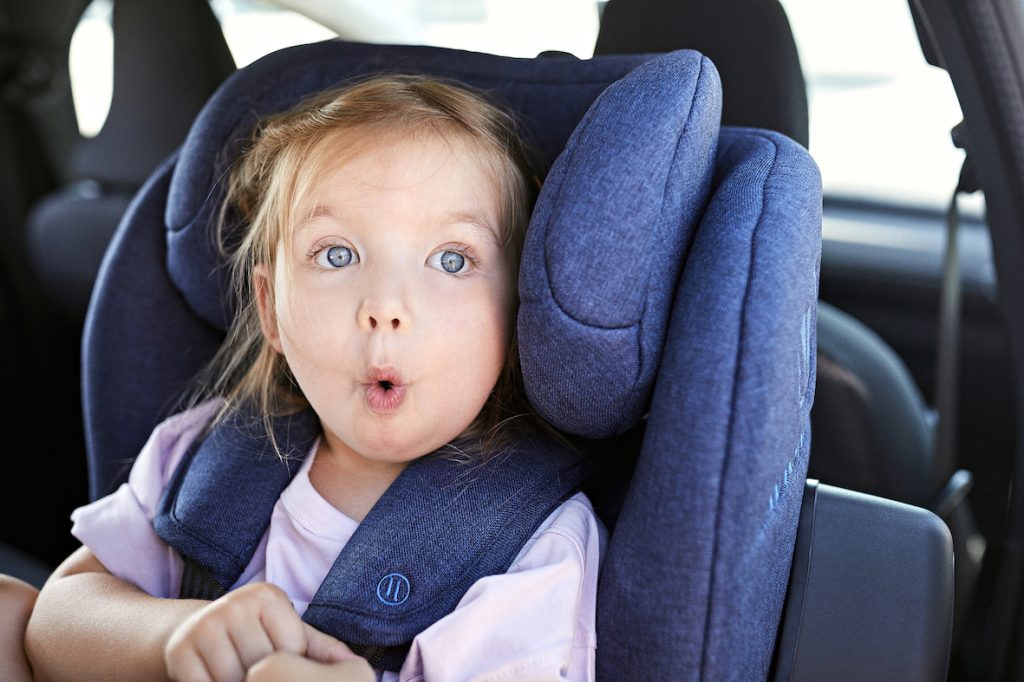Recent data from Essex-based In Car Safety Centre reveals that 70% of child car seats are either unsuitable for the child, incorrectly fitted, or in some cases, both.
Choosing the perfect car seat can feel like navigating a maze for new parents. With endless options and conflicting information, ensuring your child’s safety on the road can be overwhelming. In support of Child Passenger Safety Week (15th – 21st of September), Essex-based car seat experts at In Car Safety Centre, have partnered with leading car seat brand Avionaut to develop its ultimate car seat checklist, a comprehensive guide that reveals the top 6 things parents should consider when choosing a car seat, along with insights from car seat safety experts.
“Selecting the right car seat is a crucial safety decision for your child,”
Recent data from Essex-based In Car Safety Centre reveals that 70% of child car seats are either unsuitable for the child, incorrectly fitted, or in some cases, both.
Choosing the perfect car seat can feel like navigating a maze for new parents. With endless options and conflicting information, ensuring your child’s safety on the road can be overwhelming. In support of Child Passenger Safety Week (15th – 21st of September), Essex-based car seat experts at In Car Safety Centre, have partnered with leading car seat brand Avionaut to develop its ultimate car seat checklist, a comprehensive guide that reveals the top 6 things parents should consider when choosing a car seat, along with insights from car seat safety experts.
“Selecting the right car seat is a crucial safety decision for your child,” says Simon Bellamy at In Car Safety Centre. “With numerous car seats on the market, it can be difficult to find reliable information. To assist parents, we’ve partnered with Avionaut to craft a helpful checklist of the top 6 things to consider when choosing a car seat for your little one.”
“With numerous car seats on the market, it can be difficult to find reliable information. To assist parents, we’ve partnered with Avionaut to craft a helpful checklist of the top 6 things to consider when choosing a car seat for your little one.”
1. Test Before you Invest
Before you make a decision, find a retailer willing to help you try out car seats in your vehicle. This way, you can ensure a snug and secure fit for your child’s comfort and safety. If your baby is likely to travel in another car regularly, for example with other family members, check that the car seat fits their car, too.
Top Tip: Ask if staff have been trained in car seat fitting. Their expertise can give you peace of mind knowing that your little one is properly protected. They will also be able to offer a fit check to make sure your child is properly supported in the seat.
2. Find The Perfect Fit
When selecting a car seat, prioritise the latest safety standards. Look for an i-Size car seat (also known as R129). This European regulation is the most up-to-date safety requirement for child car seats.
The law requires babies to travel rear-facing until at least 15 months old, but some i-Size car seats allow rear-facing use all the way up to 6 years old, offering superior protection. Once your child has outgrown their rear-facing car seat, they should transition to a high back booster seat which offers maximum protection – these seats are suitable up to the age of 12-years.
Top Tip: Use a rear-facing car seat for as long as possible, as these offer better protection for the head, neck, and spine in the event of a car accident. Once your child has outgrown their rear-facing seat, they should use a high back booster, rather than a backless booster seat.
Fiona Suffield commented: “Rear-facing car seats are incredibly effective, reducing the risk of head and neck injuries by up to 5 times compared to forward-facing seats, and offering a significant overall safety boost – up to a 90% reduction in injury and death for young children involved in a crash.”
3. Car Compatibility
Planning ahead is key. Make sure that your chosen car seat is compatible with your car and install your seat before your baby arrives – a safe ride home from the hospital is essential. Most manufacturers offer online car fit guides for easy checking.
Check if your car has ISOFIX connectors (sometimes hidden between seat padding) for simple car seat installation. Check your car’s manual or consult a professional if unsure.
Top Tip: ISOFIX is an internationally standardised car seat fitting system. It uses two metal anchors built into your car to securely lock the car seat (or its base) in place, eliminating the need for seat belts. While ISOFIX simplifies installation and minimises errors, a properly installed seatbelt is still considered equally safe.
4 Must Have Features
Extended Rear-Facing
Keep your little one rear-facing for as long as possible (ideally until they outgrow the height limit) to reduce the risk of severe injury in the event of a collision.
Lightweight
Choose a car seat with a weight that you can comfortably manage in addition to your baby’s weight, especially if you’ll be lifting the car seat frequently. Consider an ISOFIX base for easy installation that minimises installation errors and stays in the car for convenience.
Travel System Compatible
Life is easier with a car seat that clicks onto your pram for seamless transitions. Most reputable car seat brands have adapters so you don’t have to buy a car seat of the same brand as your pram. Remember, car seats are only recommended for short journeys and should not be used as a replacement for a carrycot when shopping or on days out with the family.
360º Rotation
As your child grows and transfers to a second stage car seat, a 360° rotating seat will make it easier for you to get your little one in and out of the car. No more awkward manoeuvring – just swivel the seat and you’re good to go!
Adaptable Harnesses & Headrests
Ensure a snug and safe fit as your child grows with adjustable harnesses and headrests. Some even offer removable padding for premature babies and extra space for toddlers. Also consider car seats with side impact protection for additional safety.
5. Second Hand Seats
While second-hand car seats can seem tempting, they may have hidden damage, passed expiry dates or missing parts that could compromise your child’s safety in a crash. Additionally, older models might not meet the latest safety standards.
For peace of mind, prioritise a brand new car seat. It will come with complete instructions, ensuring a proper fit in your car and maximum protection for your precious little one.
Top Tip: Keep an eye out on retailer websites for discounts and promotions to save money on high-quality car seats. Some retailers also offer a price-match guarantee and payment plans.
6. Safety Standards
- EU Approval: Look for the “E” mark on the car seat, ensuring it meets European safety regulations.
- i-Size Standard: Also referred to as ‘R129’ – this is the latest European safety standard for car seats, offering the highest level of protection. Over time, all car seats will transition to meet these stricter i-Size requirements.
- Additional Testing: Some car seats undergo even more rigorous testing by organisations like ADAC and the Swedish Plus Test. While not mandatory, these additional tests can provide extra peace of mind. The Swedish Plus Test is a voluntary car seat test and the only test that measures neck loads. It is considered the toughest crash-testing in the world.
Top Tip: When it comes to your child’s safety, prioritise a car seat that offers the best available protection. Look out for safety credentials such as the Swedish Plus Test and additional safety features such as side impact protection.
- Victoria Winter



